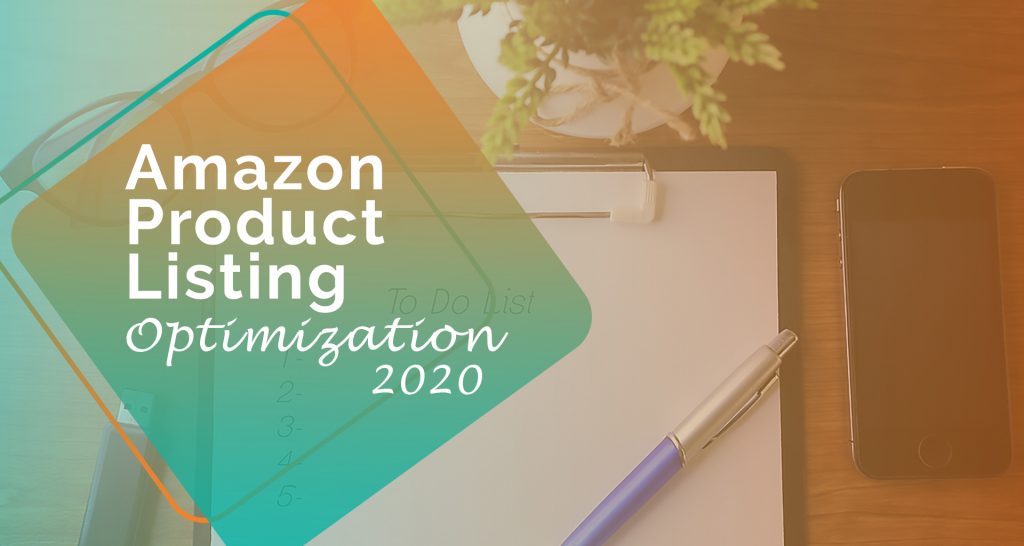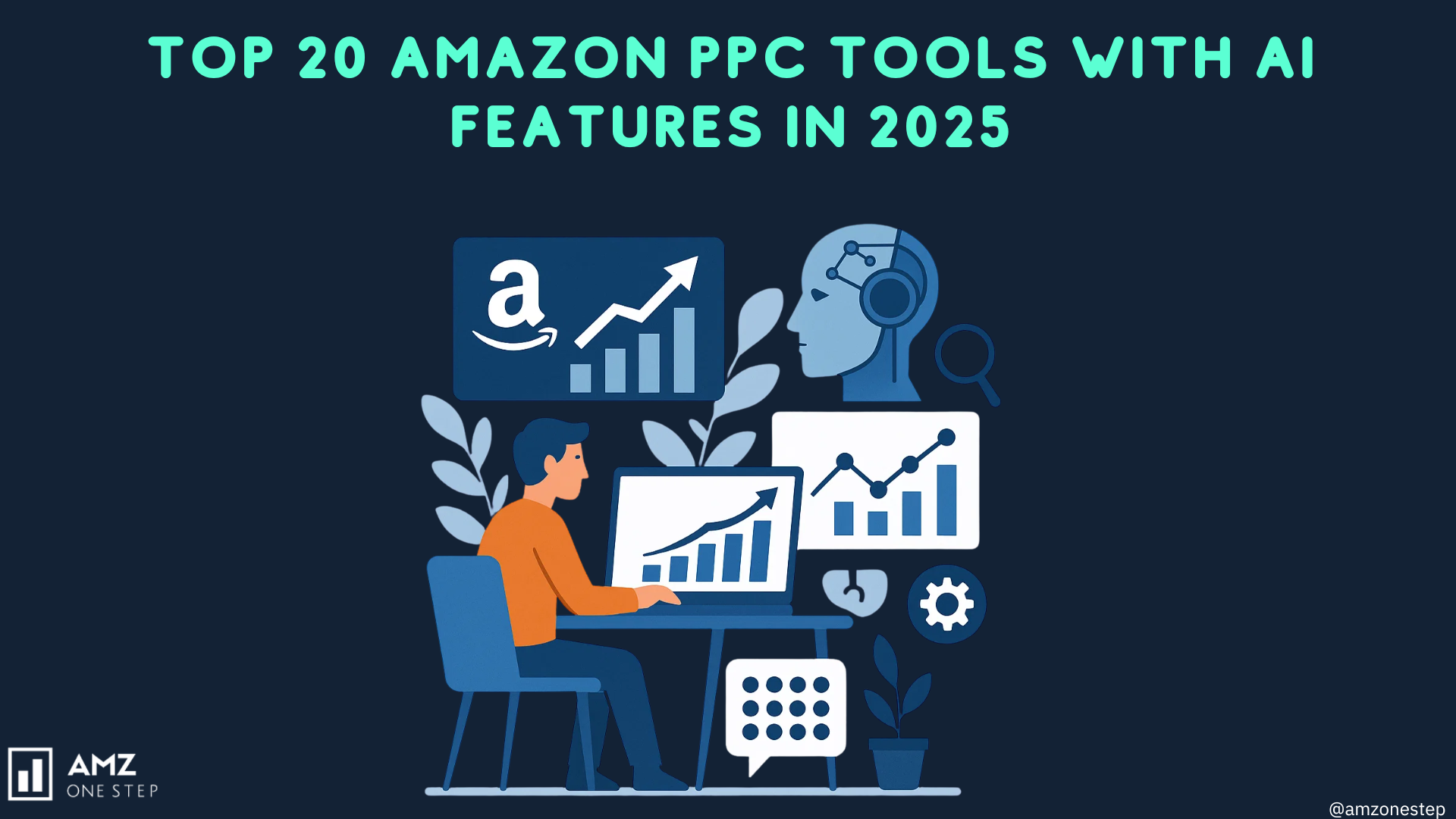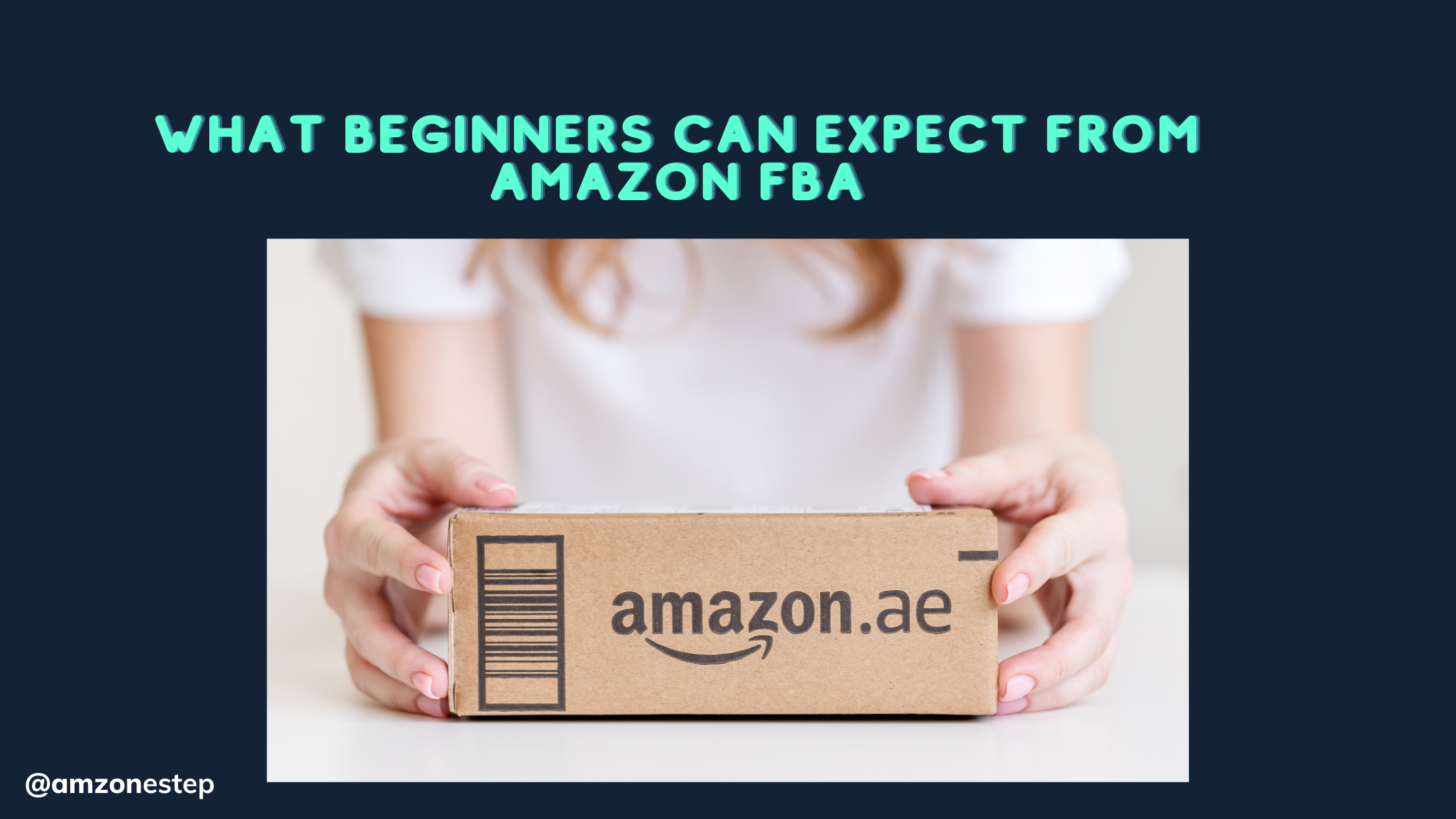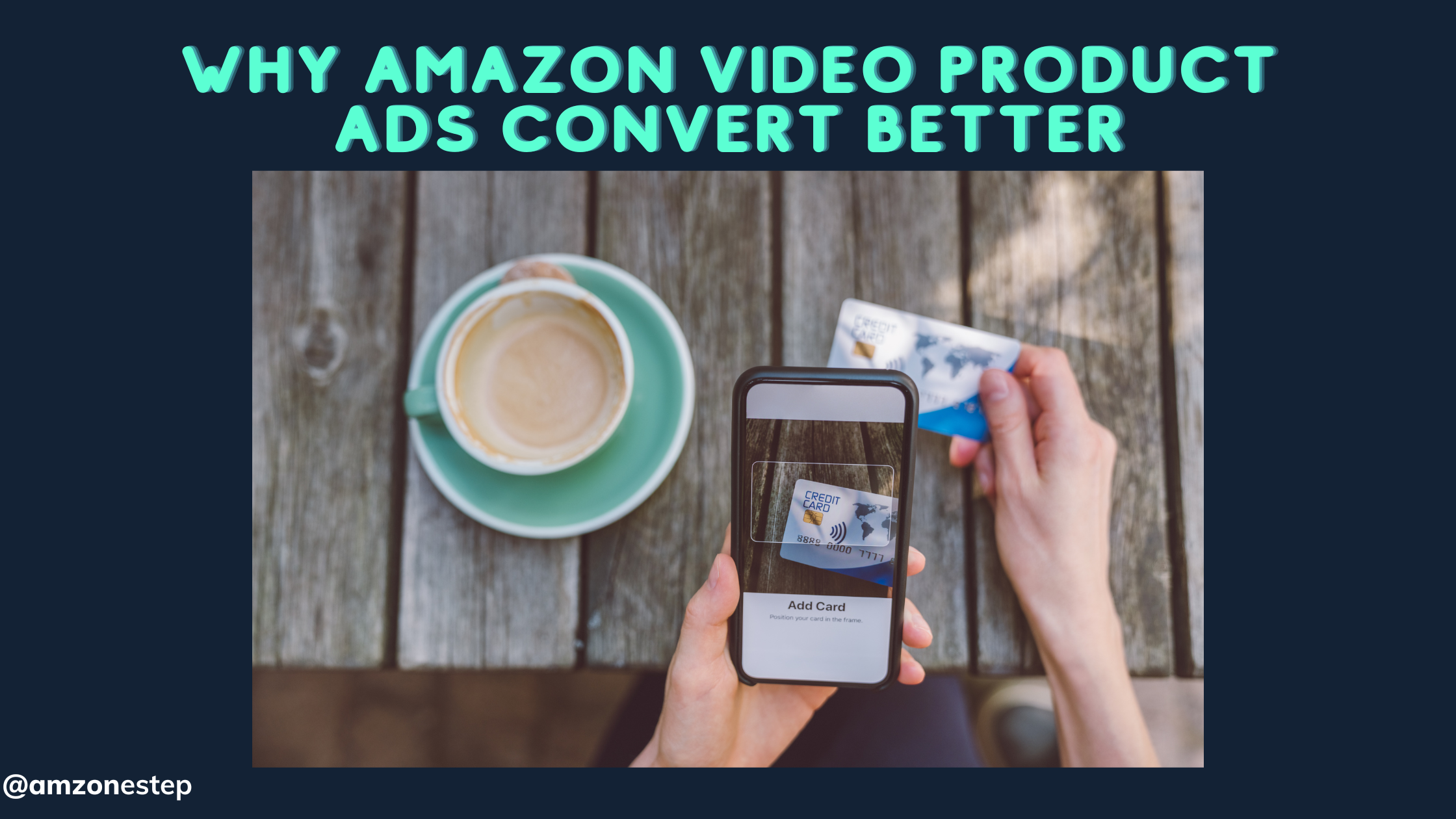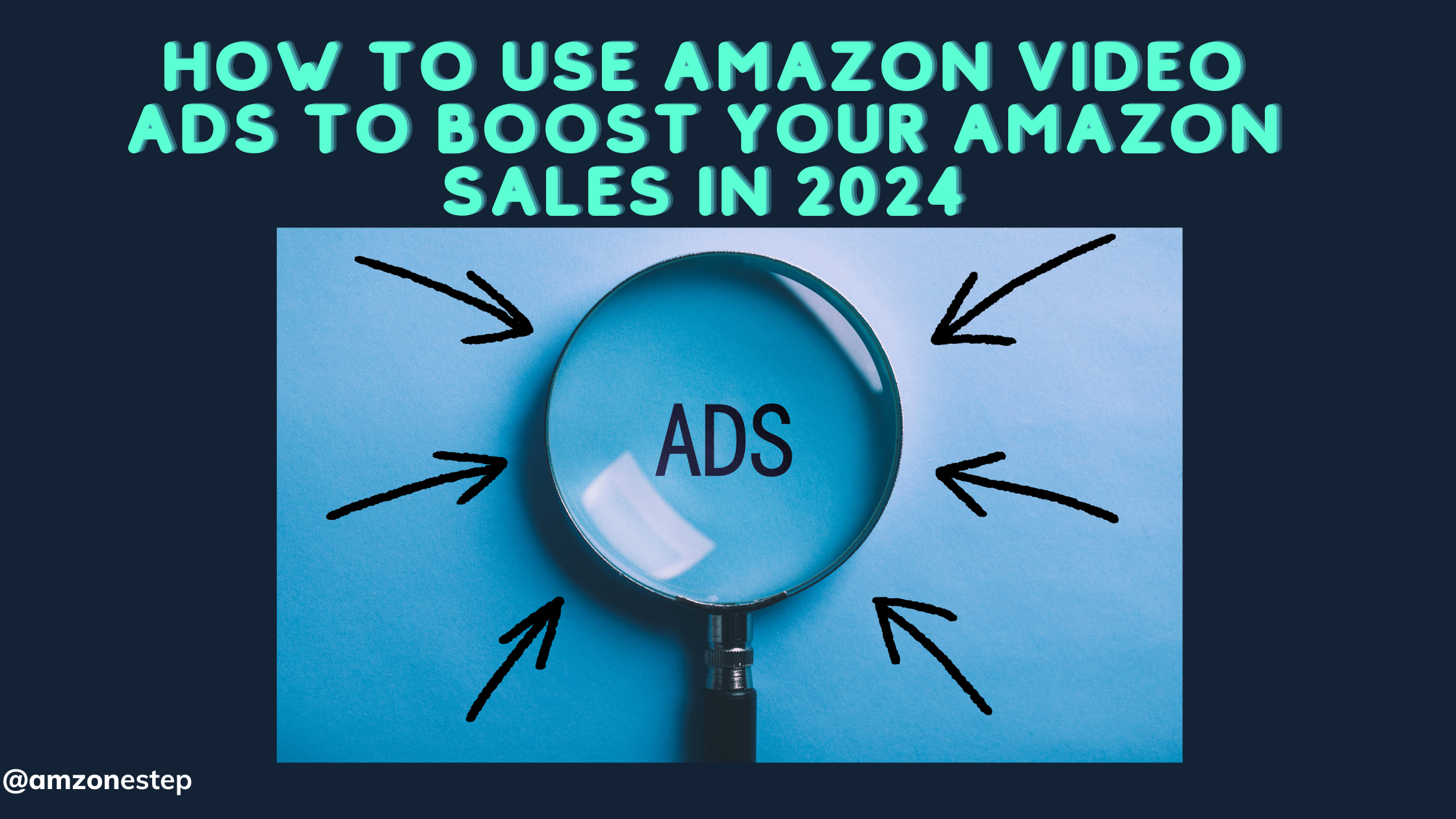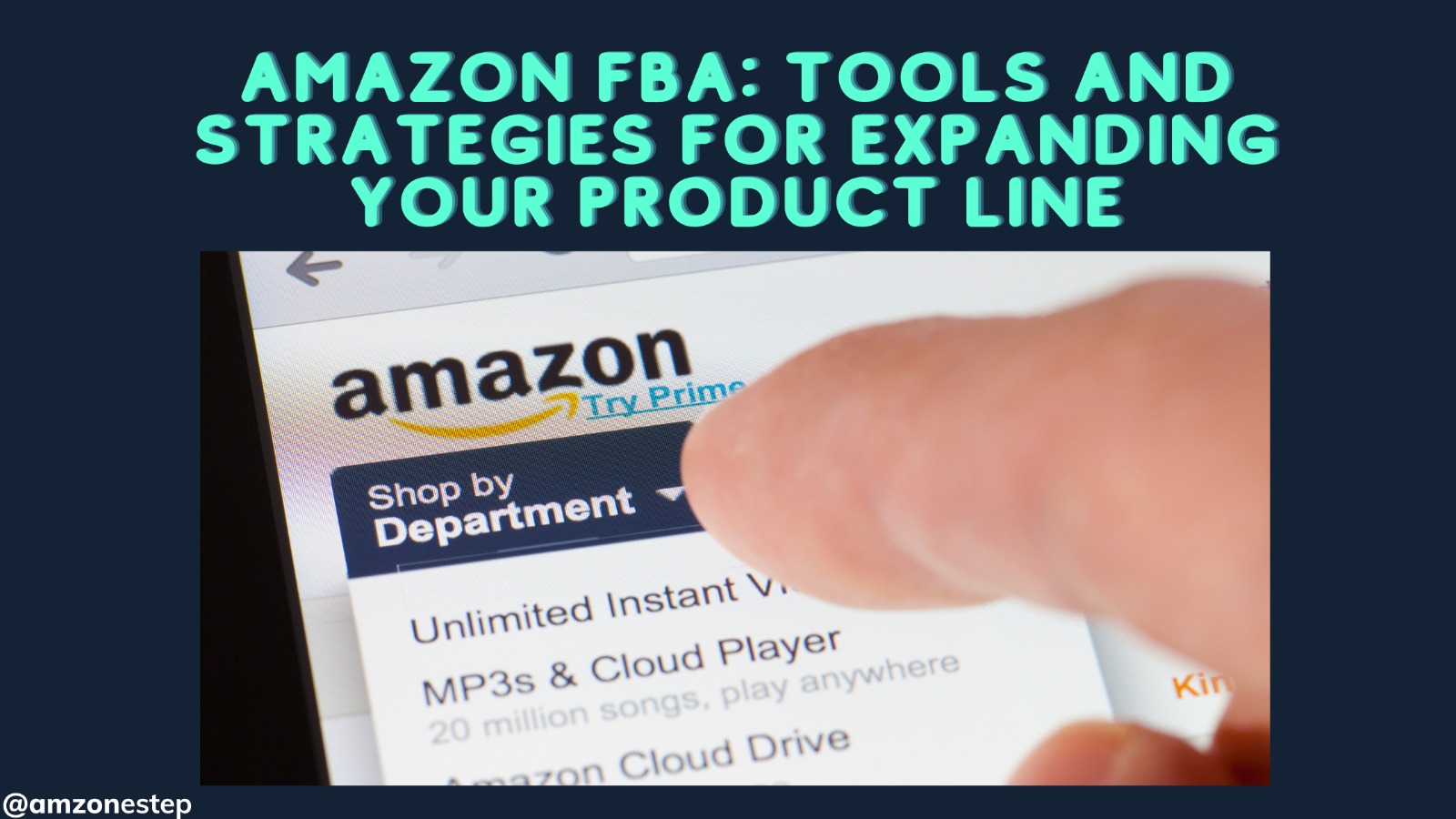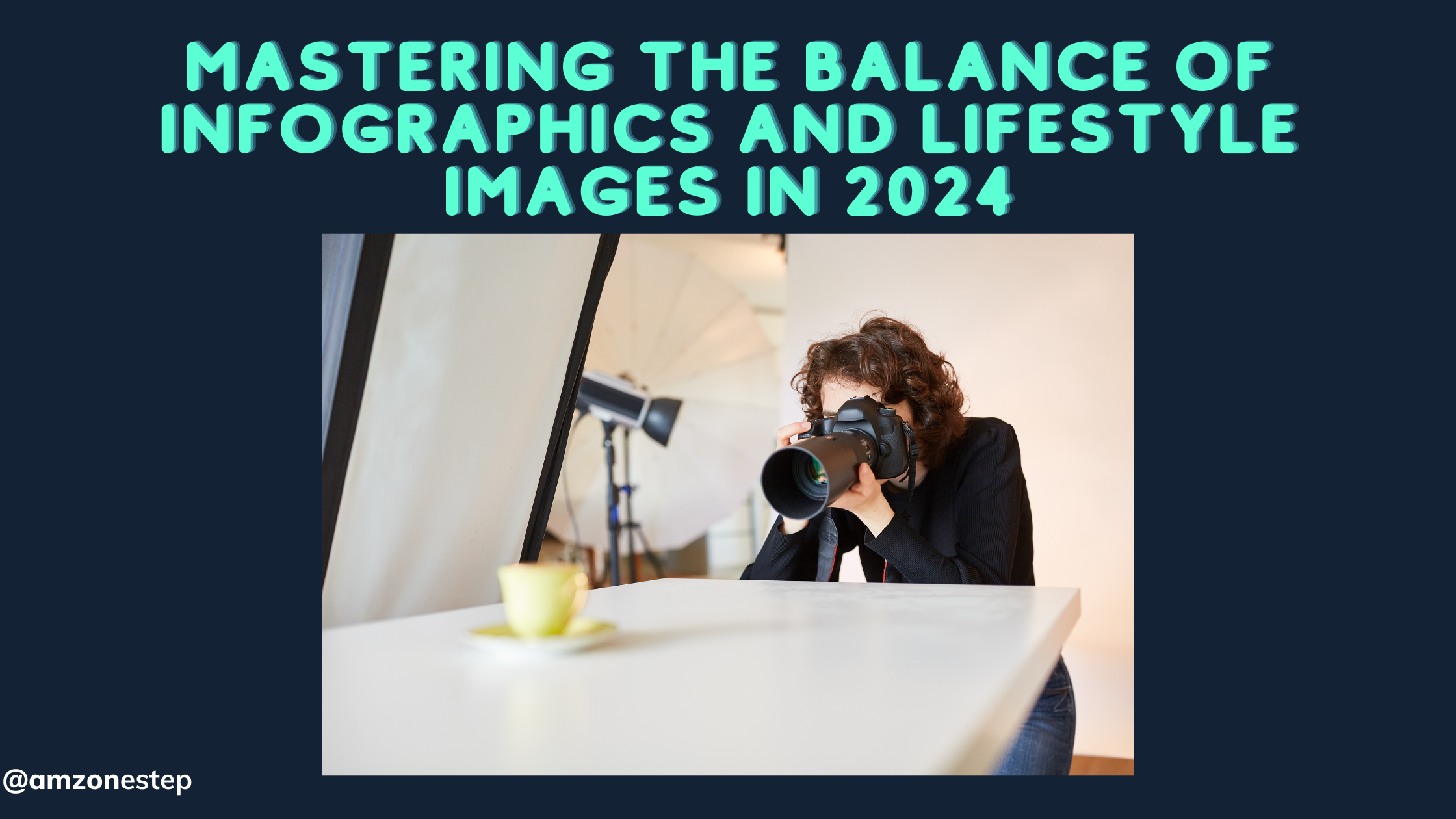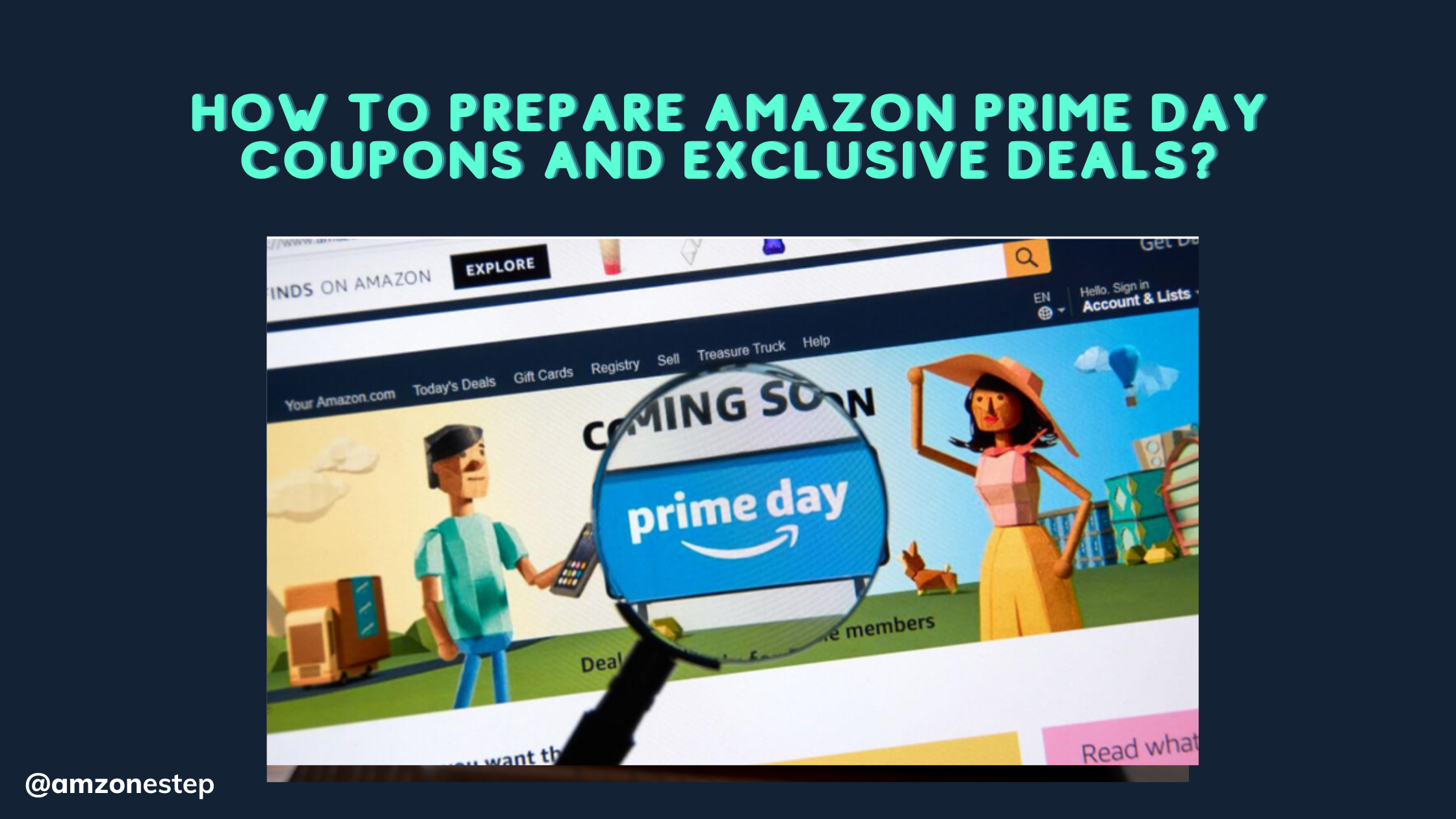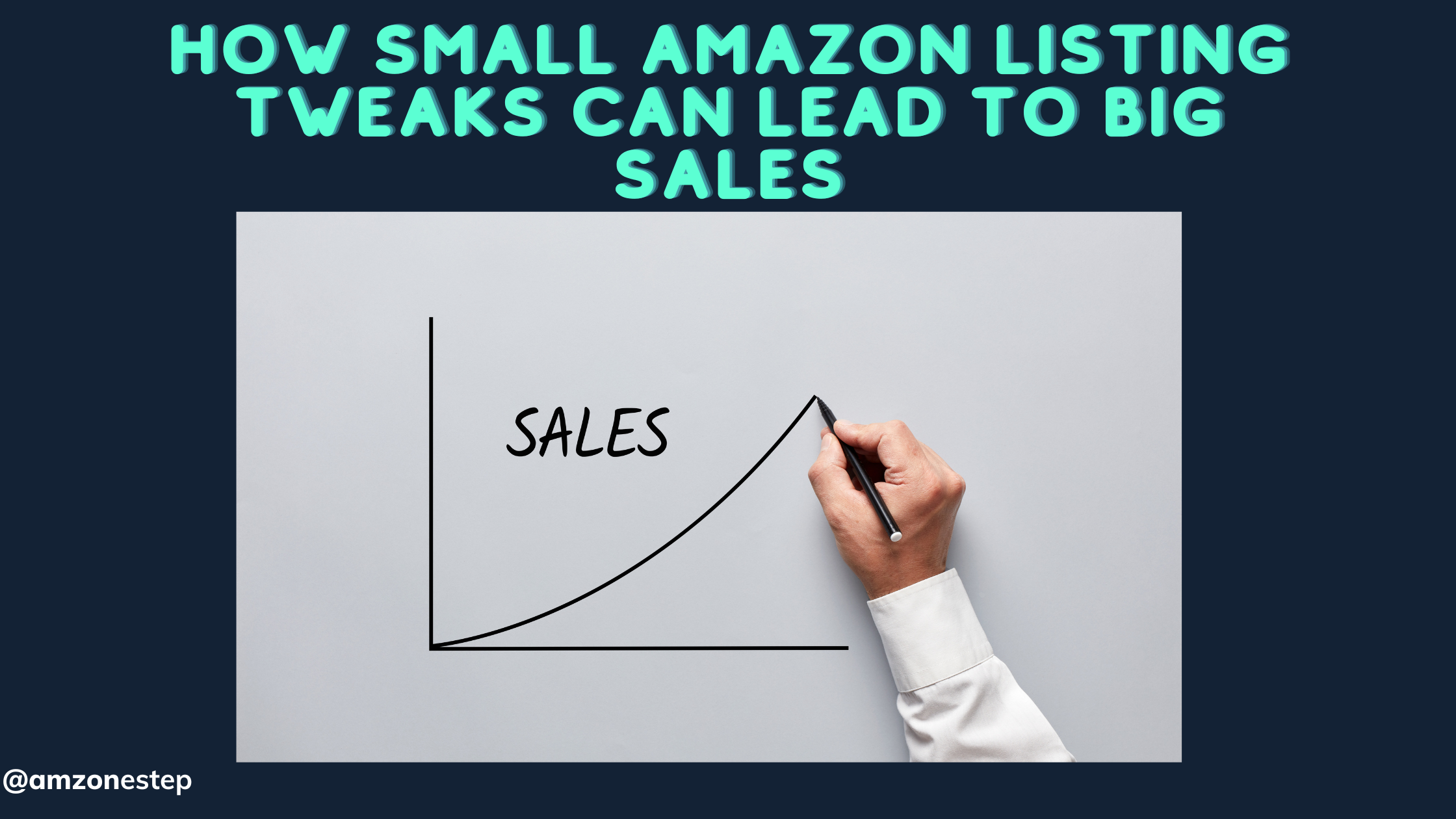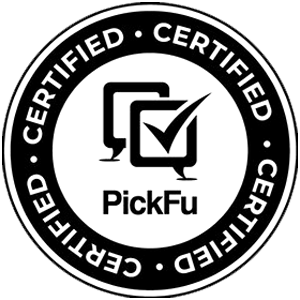It’s no mystery that having a powerful listing is very important. Amazon, a marketplace filled with millions of sellers, is not an easy market. And to be sure, the competition is in no way going to be easier.
With a total revenue of $178 billion USD and over a million sellers, Amazon is an ever-growing market.
Therefore; listing optimisation has become even more important in the current era.
As a seller, it is crucial to understand the process of creating and optimizing listings that can drive traffic and sales.
Sorry, there are no secret hacks of Amazon Listing Optimization, you just have to do it the right way.
Before we go ahead into the details of Listing Optimization, you need to understand the Amazon Ranking Algorithm.
The A9 Amazon Ranking Algorithm
As with every other search engine, Amazon has its own algorithm to rank products based on search queries.
Amazon works primarily on the principle of CTR (Click through rate) and CR (conversion rate) of a product which determines the ranking of the products. Products with more clicks and conversions are most likely to get ranked in Amazon than the ones that don’t have much clicks and conversions.
So, we are left with 2 goals. Increase the CTR and Increase the CR.
As much as Product Photography is important to increase your product’s CTR and maintain high rankings in Amazon search, listing optimization is also a key aspect of the A9 Amazon Ranking Algorithm.

Why do listing optimization?
Listing Optimization is the backbone of Amazon selling as most of the things related to ranking, clicks, and conversions are directly linked to it.
But, what worse can happen if you ignore listing optimization?
You can still sell your products on Amazon but will lose many sales. Achieving high organic rankings in Amazon is impossible without optimization of listings. With low ranking, you’re most likely to achieve a minimal traffic and low conversions while your competitor will get the maximum share of traffic and sales.
In order to increase your traffic and conversions at the same time, you have to pay attention to the details of Amazon Listing Optimization.
I am here to show you the right ways to optimize your listings in Amazon.

How are your listings doing?
You need to have a holistic view of your Amazon listings by taking few things in account. Analyzing your listing is indeed very important as you should have an idea about your current position. I typically look upon 4 things when analyzing my listings.
Sessions: –
Session means traffic, right?
No, it isn’t exactly the traffic. A session can involve multiple page visits and additional layer of timing which makes the sessions unique. According to Hubspot, if a person leaves your site and comes back after 30 min, it will be counted as 1 session.
Here, In Amazon, Sessions describes the number of visits done by Amazon customers in 24 hour period. This basically tells you whether your product is reaching to the audience or not.
A healthy Session Percentage is 12.3%. As a beginner, even if it’s close to 6%, it’s good.
Unit Session Percentage
It is the percentage of the numbers of units purchased compared to your sessions.
Sales
Off course, your gross sales defines a broader story of your product and your listing.
Product Reviews
If you’re getting sales and no reviews, this is absolutely alarming.
A specific element will not paint a whole story about your performance on Amazon. Please note that with the increase in session percentage, your conversion rate will go down and your sales will increase; there is nothing to worry about as this is completely normal.

Competitor Analysis
The first step of Amazon Listing Optimization 2020 is to perform a comprehensive competitor analysis.

Amazon Keyword Analysis
This is the most crucial step to listing optimization.
In order to achieve the top rankings in Amazon, you need to do an extensive keyword research and find out the keywords your competitors are ranking for.
This is very similar to Google SEO where we find out the high volume keywords using tools such as ahref, semrush etc.
Similarly, in Amazon, the only way to carry out a proper keyword research is to use a keyword tool. You can find many free keyword tools online that drives results directly from the Amazon.
Let’s say; you are looking to sell leather jackets for women. Follow these steps for your keyword research.
- Login to your keyword research tool and select the country where you want to sell your product. (I am using AMZWordspy in this case)

2. Type leather jackets for women on the search bar and hit the button.

3. You will find a range of keywords with different popularity. The popularity here suggests the keyword volume which also reflects the competition and the difficulty to rank it.

Jot down the keywords with high search volume.
Find Out the Big Players
The big players in Amazon can teach you many things. The only reason for them to be the big players is the fact that they have done things in the right manner.
If you’re selling on a niche that has a high competition, you probably should analyze the listings of the best sellers. Spot the metrics that make them rank in the search page. Jot down the keywords that they use in the description and also know their weaknesses by going through the customer’s reviews, ratings etc. This could help you know the fields in which your products can shine.
Have a look into the Q&A section
The Q&A section helps you to know more about the products. This section contains the doubts that customers have about that product; this can help you to optimize your product details too.
Bundling the products
You might have seen a section below the product description “Customers who bought this has also brought” section which lists the products that can be brought along with the product that you are seeing.
Amazon Sellers must try this feature of bundling the products that allow to create new products, add them to the catalogue and be the seller of the whole bundle or the particular product.
Try finding the best combo for the product you sell. This is also a great strategy to perform Amazon Listing Optimization.
6 Pillars of a Product Listing
As seen from the past practices of successful Amazon Sellers, there are 6 significant pillars of Amazon listing optimization 2020 which should be considered.
- Title of the product
- Description
- Bullet Points
- URL
- Images
- Reviews
Each of them is a major ranking signal for the A9 Algorithm. You need to follow the best practices to optimize these pillars, while strictly following the Dos and Don’ts to beat your competitor and get the ultimate market share.
It’s all about playing your cards right!
Optimizing the content

After analyzing your competitor and completing your keyword research, the next thing is the practical work.
There are a list of Amazon listing optimization tools and Amazon listing optimization services that the Amazon Sellers can avail. The tools and services reduce the burden of Amazon Sellers and let them concentrate on the business alone.
Here are some tips suggested by the Amazon SEO experts that you must keep in mind in order to maximize your sales in Amazon.
The Amazon Ranking Algorithm mainly runs on the relevancy factor. It determines the ranking of a product according to its CTR and CR. So, anything that helps in increasing the CTR and CR is an ideal aspect of listing optimization.
Optimising Product Title:
The value of the product title is mostly same for Google SEO and Amazon Product Title Optimization, however, the criteria for writing it is very different. This is one thing that you shouldn’t be confusing at all.
In Google:
We write an engaging title to enhance the CTR (Click through Rate).

In Amazon
Here, you don’t have to worry about making it engaging. All you need to do is to place your keyword that shouldn’t be longer than 80 characters. (Although, there isn’t any hard and fast rule about the length of the title, but I have observed better results on maintaining it to 80 characters)
The rule for writing product title in Amazon listing is:
Brand name + Product Name + Features

Moreover, it should be noted that the A9 Ranking Algorithm highly values product title when determining the Amazon Product Rankings. Product title is the most important part of the product page. The maximum characters that the Product Title can hold are 200 characters.
Amazon product Title Optimization must be carried out in accordance with these guidelines.
Optimising Product Description:

This is where you need to come up with something creative and informative at the same time. Like product title, descriptions are also an important ranking signal of the A9 algorithm.
You can add as much as possible information about your product under the Product Description. The ideal listing includes bullet points that involves the key features of the product. This helps the user to easily find out why your product is unique.
Remember to use the long-tail keywords in your description and bullet points.
Optimising Bullet Points
Like Product Title and Description, use of long tail keywords in the bullet points hold significant weightage in the ranking algorithm. But there is more than just sniffing keywords.
Over the last few years of my Amazon selling, I have noticed that bullet points have worked greatly for some of my products. Here are few tips to write ideal bullet points for your listing optimization in Amazon:
- Create the need of the product. Sometimes, the buyers is confused whether or not to buy a certain product. In this case, infographics and lifestyle images can do a lot for you.
- Enter reasoning by describing the core benefits. Let your viewers know that what the product is made up of and will it solve their problems.
- Go for a comparison of your product against your competitor. This actually help more than anything. Because this is where, customer has a higher chance of getting convinced in making a purchase. Things such as extra bonus or any outstanding feature is great to mention in the bullet points.
Writing things like people trust this brand blah blah and theories doesn’t make sense at all.
Optimising Product URL
As in Google SEO, you have the accessibility to include your keyword in the product URL. Undoubtedly, it is an important ranking signal of the Amazon Ranking Algorithm.
Optimising Product Images:
Product images plays a convincing role for the customer in making a purchase. That is why, product photography has become more important in today’s e-commerce.
Optimizing the product images according to the Amazon listing optimization is the last thing you need to do for a perfect listing. One may say that it doesn’t affect the rankings directly, however, it really helps in boosting our CTR (and that helps).
The use of high quality images, infographics and lifestyle images, and videos are few of the important optimization that you need to carryout.
Optimizing Product Reviews and Ratings
Reviews are the fuel of your Amazon listings. They not only are a big ranking signal in the A9 Amazon Ranking Algorithm but also they act as a confidence signal to the buyers which make them make a purchase. The healthy rate of reviews is considered to between 4 and 5; if your ratings are healthy, you’re doing all well.
In case, your listing is downgraded with bad reviews and low ratings, there are number of things you should start doing. Remember, bad reviews are a reflection of Bad Amazon listing and it will make you lose purchase and a big margin of market share. Moreover, and as a matter of established fact, reviews adversely effects your brand reputation that affects you for a long time.
Building a reputation takes years of hard work and struggle, while losing it only take a few bad reviews. There is no silver bullet to prevent bad reviews from appearing as there will always be some fanatic who will dislike your product, however, there are number of things you can do to counter and neutralize Bad Reviews:
- Analyze the bad patterns in your Amazon reviews. If the reviews specifically target your product, you should definitely consider making some changes in them. In case, you don’t understand the problem in your product, I recommend Amazon sellers to read their competitor reviews. Because they do help a lot!
- Now, look on the brighter side. There are countless ways to earn Amazon reviews legally that can help you achieve quality ratings and feedbacks. Using Amazon Earlier program is one of the most common way of earning reviews. To know more about how to earn Amazon product reviews, click here : ways to earn Amazon product reviews
Creating a new Amazon Product listing

In a nutshell, I am guessing you already have a verified seller central account. Start with signing up to your seller account and head to the seller dashboard which looks like this:

Hover to the inventory tab and click ‘Add a product’. Your screen will show this:

First, you need to select the relevant category to which your product fits. You’re required to choose from the suggested options on the category top.

Basic Info
After heading to the detail page, you need to add the following details:

manufacturer name
Write the name of the manufacturer. Please not that you may write your own brand name in this section.
Brand Name
If you’re are brand, write the name or come up with a catchy word.
Product name
Here, you just need to write the product title. Don’t brag!
Product ID
You need to enter your product ASIN, SKU, or UPC.
It should be noted that if you’re selling a new product, you have to buy a UPC code. There are countless sites who sell UPC codes on very cheap rates such as SnapUPC. Puchase the UPC code (try to buy it in bulk as that reduce your cost) and enter it into the required section.
Variations
Moreover, if your products come with different variations, you need to have different UPC code for each of it. You can’t use the same for every product ID.
Offer
Now, comes the offer part. You’re further required to enter the following fields:
Conditions
Here you’re required to enter the condition of your product. If it’s new, enter ‘new’
Price
The price of your product
Fulfillment Channel: –
You have 2 options. Either you take the responsibility to ship the product to customer’s destination or let Amazon do this job for you. Amazon FBA program is quite cheap and convenient as compared to fulfilling by yourself.
Images: –
 Amazon allows up to 9 images per product listing. You’re required to upload quality images of your products that should be of high resolution.
Amazon allows up to 9 images per product listing. You’re required to upload quality images of your products that should be of high resolution.
Description: –
The description section is divided into 2 categories:
Key product features
This is where you need to enter your product features in the form of bullet points
Product Description: –
You should have the content ready before you begin adding your listing. Simply add the written product description and head to the next page.
Keywords: –
Add high volume keywords and long-tail keywords into the section. You can add as many as you can.
More Details: –
This is where you can add additional details about your product such as dimensions, length, material, washing techniques, and thickness etc.
In short, you should enter any details you think a buyer would be interested in knowing that. Off course, for that you should be well-versed with your own product.
Key takeaways
Having a powerful listing is very important for any Amazon seller to survive in the tough market of Amazon. Otherwise, you will not get any exposure nor any sales.
For content:
As they say, write for the viewers not for SEO.
Content should be engaging and relevant at the same time. When snuffing keywords, you should make sure that it doesn’t shade away the readability of the content.

Some important takeaways:
- The A9 Amazon Ranking Algorithm works on the factors of CTR (Click through Rate) and CR (Conversion Rate) when determining the ranking of the products. Product with more clicks and conversions are most likely to rank higher in the Amazon search.
- You can still get traffic and sales if you chose to skip optimization of your listings. However, you will lose a large amount of market share and sales, and will not rank higher in the Amazon searches.
- You should check the performance of your listings by analyzing your sessions, unit session percentage, sales, and product reviews. Please note that one specific element will not tell you a whole story.
- With the increase in sessions and sales, there is a possibility of decrease in conversion rate; this is very normal so you shouldn’t take it as a worry.
- Healthy session percentage is 12.5%
- Amazon Listing Optimization revolves around the optimization of product title, product description, URL, bullet points, images, and reviews.
- In order to create an Amazon listing, you should have a verified seller account.
With nearly 600 million products sold on Amazon and new Amazon sellers entering the market, the competition has become fiercer. As a matter of fact, listings that leverage FBA (Fulfilled by Amazon) are the top priority of Amazon.

Hi there! I’m the content marketing and branding specialist for AMZ One Step. I work hard to create engaging and informative content that helps our readers learn more about Amazon selling and how to make the most of their businesses. I love spending time with my family and exploring literary works when I’m not writing or working on projects.

